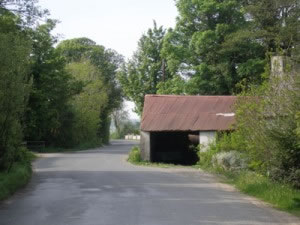The other day my son asked me ‘Dad, what do you call the people who own football?’ He meant FIFA of course, and it’s interesting that that’s the way it’s seen nowadays. I put it to him that he owned it, and I owned it, and so did everybody else. At least that’s how it was when I was his age. All football fans know that this is a World Cup year, or a FIFA World Cup ™ year as FIFA would have it. FIFA are in the spotlight because of street protests in Brazil against the cost of hosting the World Cup there this summer, and because of the number of deaths among poorly- paid foreign labourers working on the construction of the 2022 stadia in Qatar.
Back when I started watching football in the mid- seventies, I was fascinated by Wembley Stadium, scene of the FA Cup final every year and incredibly glamorous in my mind. I soon discovered the then- futuristic Olympic Stadium in Munich, which totally blew me away with its’ spiders web roof hung from poles. (Later, in architecture college, I made a model of the roof from a pair of tights).At the same time, The Big Match and Match of the Day provided weekly doses of English football grounds steeped in history and atmosphere.
That’s not to say it was idyllic, with football hooliganism rampant. The first game I went to was at the old Wembley Stadium in 1983, and my outstanding memory is of the heave in the crowd ten minutes before kickoff as the latecomers piled in. I ended up a fair bit away from where I started, squeezed far apart from the people I had gone to the game with. It wasn’t good, and of course the Bradford, Heysel and Hillsborough disasters were to come.
The Olympic Stadium in Munich.
The Taylor report that followed Hillsborough recommended that football stadia become all- seater, and with Sky tv money soon pumping into English football, the experience of watching a game live was dramatically changed. On the positive side it became family friendly, but on the negative side it became corporate and sanitized, often out- of town and very expensive. In November 2012 I paid €180 for a ticket to watch a Champions League game in Madrid, at another of the old stadia from my childhood.
The seat was perfect, right on the halfway line, and the game was good, but I was really puzzled by the atmosphere. For a vital game, it was flat. The Borussia Dortmund fans in their bee- coloured jerseys made most noise in the away end, partly because their team was playing so well against Real Madrid, but also (I’m convinced of it) because they were standing up. They seemed to be having a party. German stadia allow standing up, and now there is a move on to allow it in English stadia as well. I’m all for it, even though the last standing game I was at, in Arsenal’s old art deco Highbury ground, I spent the ninety minutes standing on one leg on my tiptoes leaning all over the man in front of me, like thousands of others around me. Now Arsenal play at the Emirates Stadium, with a famously dull atmosphere. Meanwhile, on quiet nights, you can hear the ghosts of Herbert Chapman and Cliff Bastin in the back gardens of the Highbury Square apartment development….
The art deco style Highbury ground, former home of Arsenal FC.
For me, the new football stadia are architecturally interesting, but are becoming the same the world over as FIFA strive for corporate uniformity. The old grounds, tightly bounded on all sides by the redbrick communities they sprang from, are becoming a thing of the past. The twin towers of Wembley, with all their history, are long gone and the most interesting things about the new stadium are Bobby Moore’s statue and Geoff Hurst’s crossbar from the 1966 World Cup final in the museum there. The new stadium lacks the atmosphere of the old stadium on match days, and has little individuality to differentiate it from the identikit stadia springing up the world over. God be with old- style regional variation such as the moat around the pitch that sticks in my mind from Argentina 78, or even the now disused- for- football Olympic Stadium in Munich. People are different the world over and our football stadia, our secular cathedrals of communal experience, should reflect that.









